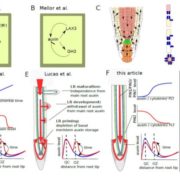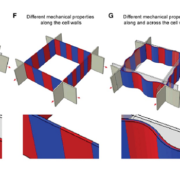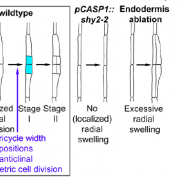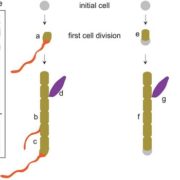Finding balance: How plants achieve signal specificity in stomatal development and defense
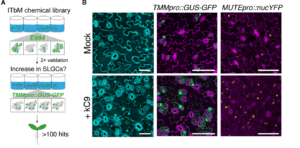 Plants need to develop and grow within their environment whilst defending themselves against potential external threats. There are limited resources for these energy-intensive processes and so cross-talk is common between the signalling pathways to find balance between growth and defence. Hermann et al., provide evidence for cross-regulation between stomatal development and the immune response and suggest that that the key to signal specificity is the balance of activation of signal receptors. Through conducting an intensive chemical screen, Hermann et al. pin-pointed a candidate signalling chemical (kC9) which activates the differentiation of stomatal cells by inhibiting the EPF-ERECTA signalling pathway. Docking models, interferometry and calorimetry assays showed that kC9 binds to the transducers of the signalling cascade, the mitogen-activated protein kinases (MAPKs), specifically MPK3 and MPK6, which inhibit stomatal development. MPK3 and MPK6 are also downstream of the FLS2-flg22 signalling pathway, a well-documented pathway in the plant immune response. flg22 treatment negated the proliferative effect of kC9, as well as the loss of ERECTA family transporters, on stomatal development, demonstrating cross-regulation from the immune pathway. This research highlights the importance of the availability of upstream receptors for signal specificity where there are overlapping components of the pathways. (Summary by Kes Maio @kesmaio.bsky.social) Science Advances 10.1126/sciadv.ads3718
Plants need to develop and grow within their environment whilst defending themselves against potential external threats. There are limited resources for these energy-intensive processes and so cross-talk is common between the signalling pathways to find balance between growth and defence. Hermann et al., provide evidence for cross-regulation between stomatal development and the immune response and suggest that that the key to signal specificity is the balance of activation of signal receptors. Through conducting an intensive chemical screen, Hermann et al. pin-pointed a candidate signalling chemical (kC9) which activates the differentiation of stomatal cells by inhibiting the EPF-ERECTA signalling pathway. Docking models, interferometry and calorimetry assays showed that kC9 binds to the transducers of the signalling cascade, the mitogen-activated protein kinases (MAPKs), specifically MPK3 and MPK6, which inhibit stomatal development. MPK3 and MPK6 are also downstream of the FLS2-flg22 signalling pathway, a well-documented pathway in the plant immune response. flg22 treatment negated the proliferative effect of kC9, as well as the loss of ERECTA family transporters, on stomatal development, demonstrating cross-regulation from the immune pathway. This research highlights the importance of the availability of upstream receptors for signal specificity where there are overlapping components of the pathways. (Summary by Kes Maio @kesmaio.bsky.social) Science Advances 10.1126/sciadv.ads3718


